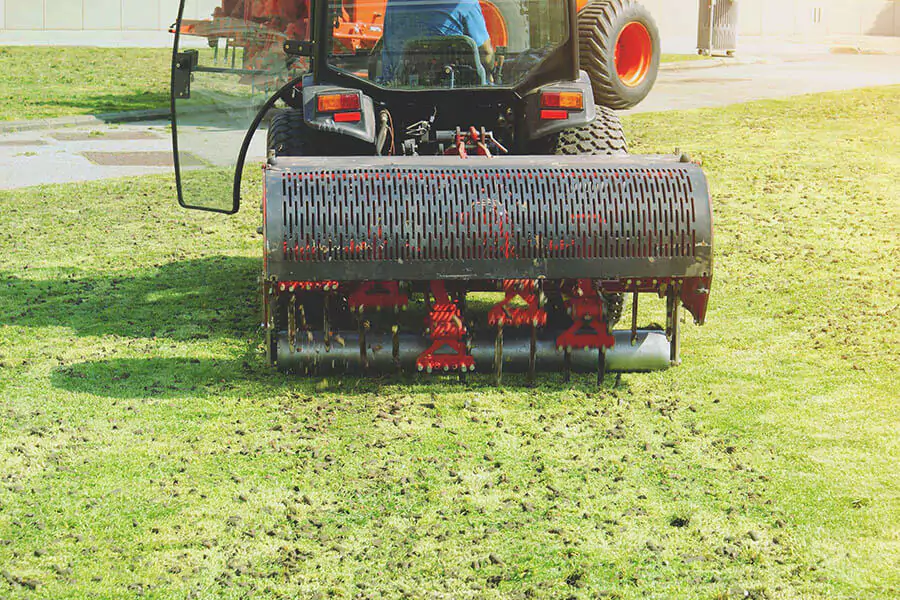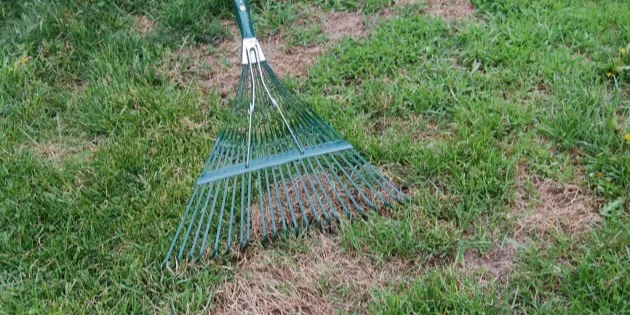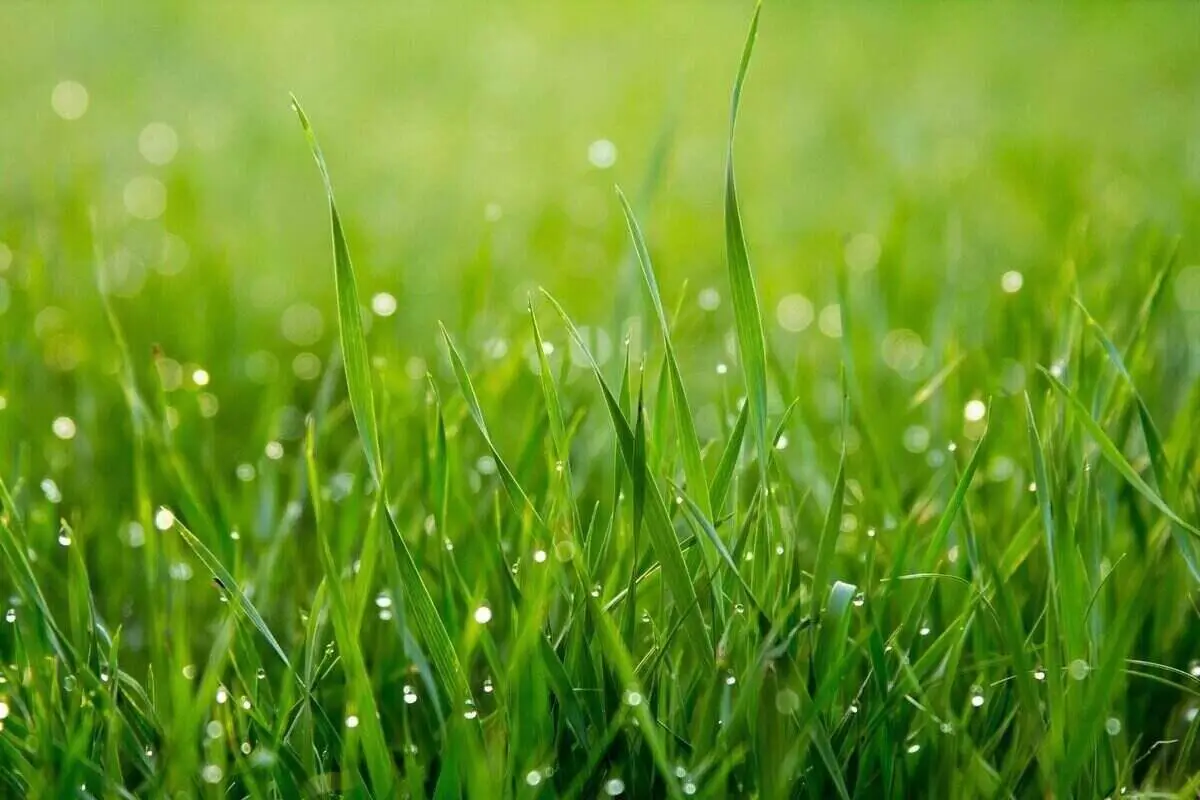Will Watering Dead Grass Bring It Back?
Last Updated on June 3, 2025 by Duncan
Brown grass is confusing and frustrating, especially if you have worked too hard to maintain a green, healthy lawn.
When homeowners see their grass turning brown, they think that it’s dead, but this isn’t always the case. The grass will turn brown even if it’s just dormant.
If wondering why grass would turn dormant, this is often its protection mechanism to protect itself from extreme weather conditions.
Will watering dead grass bring it back?
When you water dormant grass, it will come back, but there is no way dead grass will so if you are wondering whether watering dead grass will bring it back, no, it won’t.
If your grass is dead, don’t bother watering it.
Instead, think about how you can re-grow it. You can replace the grass by sodding or seeding. You can also install a new type of landscaping such as rocks or mulch on the affected areas.
How can you tell whether the grass is dead or dormant?
It’s hard to tell whether the grass is dead or dormant by simply looking at it. The only way of knowing is by undertaking the tug test.
Find a section of the brown grass and grab some grass in your hand and pull. If the grass pulls out from the ground easily, it’s most likely dead, but if the roots hold fast, the grass is dormant.
You can also tell by how the grass responds to watering. When you water the lawn, the moisture will revive the brown grass, but it will not bring back dead grass to life.
How to wake up dormant grass
Since it’s impossible to bring back dead grass, you should work on reviving the dormant one. Luckily, there are plenty of tricks you can use:
Feed it: One of the reasons why your grass is brown is because it’s not receiving the necessary nutrients. To reverse the browning, apply some fertilizer to it.
Since the grass is already going a rough patch, avoid using chemical fertilizers. Instead, go for organic options such as liquid seaweed.
Water the lawn: It’s common for grass to turn brown in a drought-stricken area. To revive the dead grass, apply water to it.
The best time to water the lawn is in the evening or early in the morning. Avoid applying a lot of water at night as the excess moisture can cause diseases.
Scarify: One of the reasons the grass will go dormant is due to the excessive accumulation of thatch.
Just as you exfoliate your skin to expose healthy new skin cells, you also should consider scarifying the grass to get rid of old dead grass, fungi, moss, and weeds.
One of the best tools to use in scarification is the spring-tine rake.
Mow the lawn: Did you know the more you mow, the quicker the grass grows and recovers? In spring, mow at least once every two weeks and once a week in summer.
Take care not to set the mower blades too low to prevent the soil from drying out too quickly.
Mowing too low also dulls the lawnmower blades that shred the grass instead of cutting it. This makes the lawn unattractive and dry at the tip.
After mowing the lawn, collect the grass cuttings and dispose them on a compost heap. Don’t leave them on the lawn as you will make the situation worse.
Reseed the lawn: Even if the dormant grass can come back by simply watering it, the chances are that you are going to have some bare patches. To get rid of the patches, you should reseed the lawn.
Water the existing lawn before you sow, then don’t water again until the shoots appear to avoid washing the seeds away.
You should then wait for the grass to get 5 cm tall before you mow it. This is to give the grass enough time to thicken out. Ensure that no one steps on the grass to avoid damaging it.
How long does it take dormant grass to turn green?
The length of time it takes for the dormant grass to turn green depends on the type of grass, the cultural conditions, and the local weather patterns. The type of grass will determine whether your lawn enters dormancy in winter, summer, or both.
Cool-season grass species such as rye, Kentucky bluegrass, and fescues do exceptionally well in winter in the Mediterranean climate but enter dormancy in the summer. They resume growth in October and November.
The cool-season grasses enter dormancy if the winter soil temperatures fall below 45 degrees Fahrenheit.
Warm-season grasses such as Buffalo grass, Kikuyu, St. Augustine, Bermuda grass, and Zoysia thrive in the summer heat, and with enough water, they will continue growing the entire season. When the temperatures fall below 55 degrees Fahrenheit, dormancy sets in and might last from September or October to March or April.
The condition of your lawn will also affect the time when the grass will recover from dormancy.
If you have thick layers of thatch on your garden, the grass might take longer to recover as thatch tends to slow the soil warm up in spring and soaks up, preventing it from reaching the roots.
Applying a lot of water during the hot weather might also delay the recovery as the grass is too stressed by the forced growth.
Despite these factors coming into play, in most cases, the dormant grass will turn green in three to four weeks.
Grass turning brown despite watering
When you water your grass, you expect it to turn green, but when it turns brown instead, you have a problem.
While summer dormancy is common in many grass varieties as a result of extreme heat, persistent brown patches in the cooler months of the year mean trouble, and when you have them, you have a reason to worry.
Your grass will turn brown despite watering due to many reasons that include:
Fungal disease: If you live in warmer environments coupled with humid conditions, your grass might turn brown due to a fungus known as Rhizoctonia solani.
Also known as brown patch, this fungus resides in the soil and consumes the decomposing plant matter.
If you don’t remove it early enough, the fungus populates and spreads to the other parts of the lawn leading to brown patches on your backyard.
To stop it, you should use a fungicide designed for it. After removing the fungus, the grass will re-grow into a uniform green hue.
Lawn disease: Sometimes, your lawn might be having a lawn disease resulting in the brown spots. If your yard is covered in black, red, brown, or white substances, the chances are that it’s diseased.
You should contact a local lawn care specialist to help you diagnose the disease and recommend the best management measure.
Grubs: A few grubs won’t do much damage to your grass, but if your yard has ten grubs within every square foot, you are bound to see the effects of it.
To tell whether grubs have infested your lawn, you should take samples from multiple areas of the yard and inspect the roots for grubs.
As the grubs hide in the topsoil, they feed on and destroy the grassroots; hence the grass can’t absorb the necessary nutrients and moisture needed to remain green. As a result, your lawn turns brown.
To restore a healthy lawn, you should use insecticides. Also, consider using controlled-release mixtures is you know grub infestation in the neighboring yards.
Low soil pH: Grass does well in a pH range of between 6 and 7. If your soil pH has gone down, the grass will most likely turn brown.
Use a pH meter such as the Luster leaf pH meter kit to determine the exact pH soil value. A pH below 6 means you need to pay immediate attention to the grass.
You need to add lime to the soil to increase the pH value.
Grass growing in shady areas: The reason the grass is green is that it’s undertaking photosynthesis.
If there are plenty of trees in your yard, the excessive shade might prevent the grass from photosynthesizing as well as it should hence the browning.
To fix this problem, you need to trim the old trees. If possible, get rid of the mature trees or those growing at awkward positions.
Improper mowing: Did you know your grass might be getting brown due to improper mowing? Dull lawn mower blades will tear the grass instead of providing a clean cut. This causes the grass to bruise.
The bruised part turns brown hence the browning lawn.
It’s easy to tell whether the lawn is browning due to poor mowing. Look at the grass tips and confirm whether they have a clean, straight edge or they are torn and jagged.
If the tips are clean and straight, dull lawn mower blades aren’t the culprit, but if the tips are torn and jagged, you should sharpen lawn mower blades. If you have had them for a long time, you should consider buying new blades.
Proper mowing involves using a sharp lawnmower blade while cutting about 1/3 of the grass’ height each session. You also should maintain a grass cutting routine so that the grass retains its strength.


